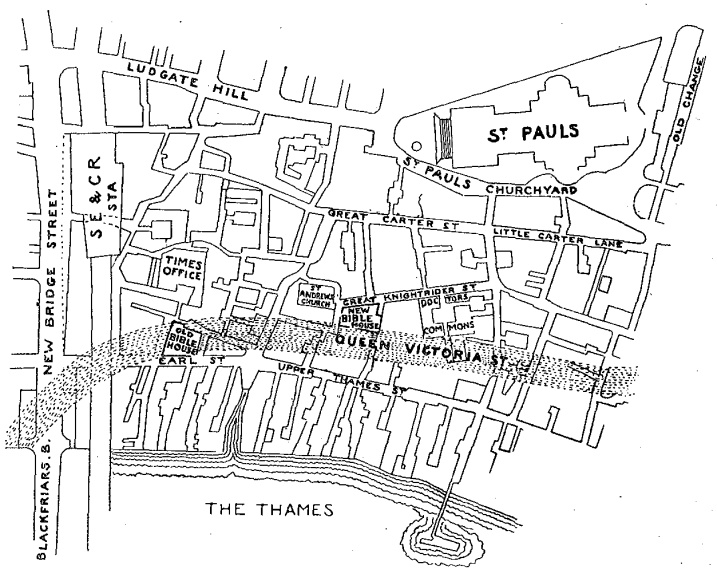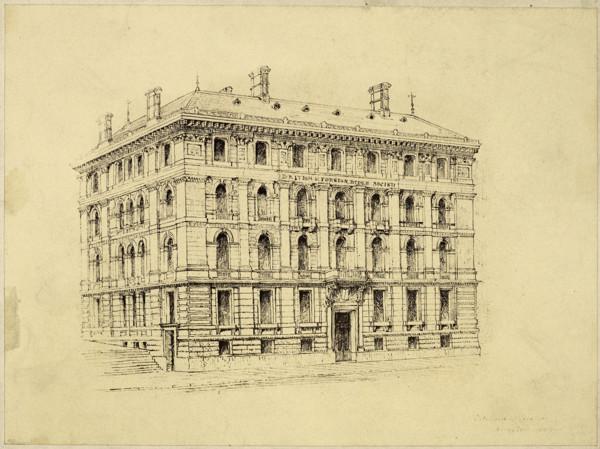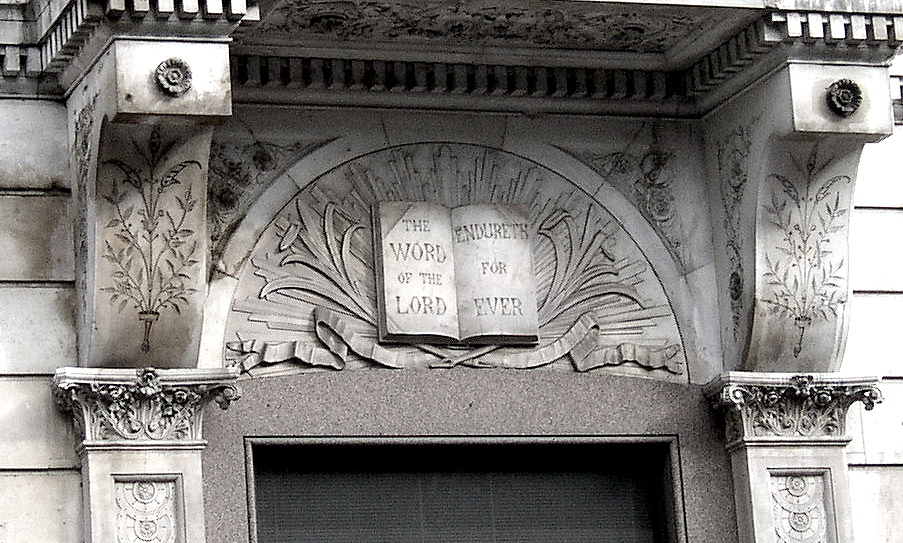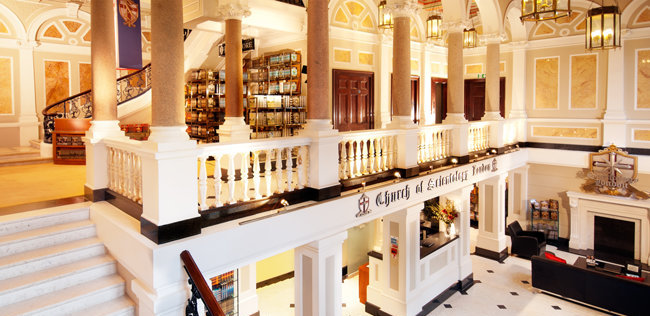146 Queen Victoria Street, EC4
Built: 1866-69
Architect: Edward l’Anson
Location: Queen Victoria Street
Listing: Grade II (1950)

Barring the churches of St Mary Aldermary and St Nicholas Cole and the much-altered College of Arms, the offices at 146 Queen Victoria Street are one of the oldest and best-preserved buildings along Queen Victoria Street, having been built at the very start of that thoroughfare’s relatively recent creation. It was constructed for the British and Foreign Bible Society, which was headquartered at this location since 1816. The original building, at 10 Earl Street, for many years was a portmanteau for the Society’s central organisation but, like the rest of that short street, it was demolished to make way for Queen Victoria Street; hence the need for a new suite of offices.

Presenting seven regular bays along the Queen Victoria Street façade as well as the lateral aspects along Wardrobe Terrace and Addle Hill, the British and Foreign Bible Society’s new headquarters are a fine example of the application of Palazzo-style proportions and composition to institutional buildings in the mid-Victorian period. Unlike many other such projects, however, this building is not astylar, featuring a full set of giant pilasters to frame the intermediate storeys as well as shortened pilasters across the attic storey. The Portland stone cladding is extended to around the building, where many coeval works tended to reserve this for the facade. The basement storey is clad in granite.

Note also the pleasing alternation of rectangular and segmental windows ‒ the former in the base and attic and the latter in the intermediate storeys. The entrance arrangement comprises two Corinthian-esque pilasters from which spring prominent brackets (with incised ornament), in turn supporting a classical balustraded balcony. The apron between the brackets is enrichened by a bas-relief carving of an open book, backed by foliage and a sunburst, proclaiming that “The Word of the Lord Endureth Forever”. This sign is currently obscured by a symbolic shield for its current occupants the Church of Scientology. The latter undertook a programme of refurbishment upon taking up this building as their London headquarters, including a well-presented entrance hall and stairway. Some earlier restoration was accomplished in the late 1980s, under the direction of TP bennet & Son.

Image courtesy of T. Hartberg (c).
The British and Foreign Bible Society was founded in 1804 with the aim of providing affordable bibles (initially in Welsh). There is a charming foundation anecdote about a girl, Mary Jones, who had walked 20 miles to obtain one such copy. From there, the remit of the society expanded to include all locations and all languages. Including the previous address at 10 Earl Street, the Society occupied those premises from the early 1800s up to the 1980s. Their London headquarters were for a time known as D’Arcy House, before being converted in the mid-2000s to their current use.


Hello,
I have just finished reading an online Robert Moffat biography. On page 245 is mentioned the fact that his figure is depicted along with other bible translators in the famous library of Bible House in London. Is your building that BIBLE HOUSE? If it is can you send me a photo or can I visit and see it please?
The Book is called Robert Moffat ONE OF GOD’S GARDENERS by Edwin W. Smith. Here is the website see page 245
https://archive.org/details/MN41761ucmf_6/page/n5/mode/1up?view=theater
I hope you can oblige to help my request.
Regards
Dorit R. Moody
The (London) Church Missionary Society and the British and Foreign Bible Society, while evidently like-minded organisations, were two entirely separate organisations. That said, the BFBS headquarters were definitely referred to by some (including their official historian) as Bible House. If I were you I would contact the current tenants of the building, which are a different organisation but still religiously oriented, as far as I understand.
Hello from South Africa.
I am desperately trying to track my Newton lineage on my paternal side. I have in my possession our family bible which was printed by CJ Clay at the university press for The British and Foreign Bible Society in 1862.
It states on the inside cover that it was “sold to subscribers at the society’s house , Earl Street, Blackfriars, London”. Is there any record that state who the “subscribers / members ” were at the time? I am hoping that it might mention my great great grandfathers name “Robert Newton” and could perhaps offer some more information about him.
I would really appreciate any information that could assist my search.
Regards
Cathy Newton
Have you tried contacting them? They are now just called the Bible Society.